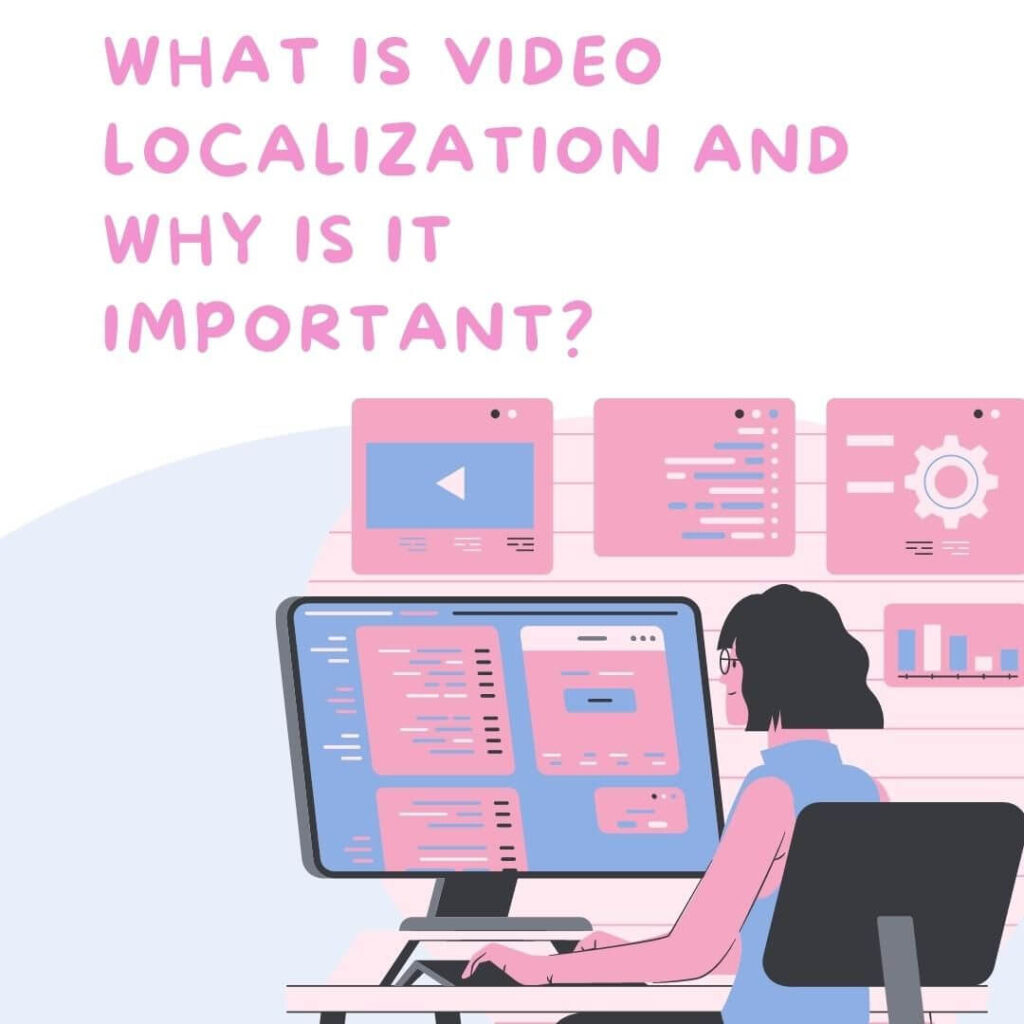Video has become a dominant way to communicate. More than 68% of people would rather watch a short video than read an article. Approximately 100 million people watch videos daily. At the moment’s request, the most conclusive tool to engage consumers and attract further business is videos.
With our world expanding ever so fast, the need to be connected with a wider range of audiences has become very important. And to target this new market to grow your brand with video content, video localization plays a huge role. But the question here arises of what video localization is and why it has become such an important aspect.

What is video localization?
Video Localization is the process of taking video content produced in a specific language for a particular audience and transforming it to be understandable by other relevant or new markets. Before understanding the whole process of video localization, we need to understand what localization means.
Localization in general can be considered an experience. The main aspect of localization is adapting an experience. In other words, localization adapts a translated message in a more local way or the local context of the recipient. Localization goes beyond text and content to garner the target audience’s cultural expectations at all levels.
How does Video Localization work?
The video Localization process involves the designing of video marketing characteristics in a way that it assists in making an online presence in the international market. To make content for a wider audience, we need to make changes according to the culture of the local foreign market.
That means, not just the language translation of the video but also the modification of video content in such a way that it represents their cultural aspects.
Five Types of Video Localization
By localizing a video or content, the product receives a new version that is more user-friendly for the target audience. For this reason, there are many types of localization services available in the market.
1. Subtitling:
Development in technology has changed the way subtitles are created and presented. Subtitling is the process of translating a spoken language/ dialogue into written text on the screen. Uncle Tom’s Cabin was the first movie to be subtitled in 1903. Subtitles play a vital role with people who are deaf and hard of hearing.
Subtitles provide them access to grasp the information as well as watch the video. If the subtitle is in a specific language, it is easier for the viewers to understand and relate better.
2. Dubbing:
Dubbing is a process used in video making or film production to add new dialogues or other sound effects. Dubbing is used to translating a foreign language into the local language. Dubbing usually maintains the tone, emotion, and richness of the voice track.
3. Lip-Synching:
Lip- Synch is a technical term used for matching lip movement. It is almost similar to dubbing, but here the words are lip-synched to the original speaker’s mouth movements. Lip Synching is considered a very complex process.
4. Versioning or Reversioning:
The whole process of localizing a video doesn’t stop at language or cultural translation. Sometimes the video is redone from the ground level with the original concept. Reversioning is a process where the existing footage is taken and re-edited.
5. Transcreation of video:
It is the process of adapting video content from one language to another while maintaining the intent, existing message, tone, and style. Versioning of the video generally includes some of the original content, but on the other hand, transcreation will be a complete reimagining of the content. It is done in order to resonate with the targeted region.
Importance of Video Localization
The need to connect and communicate has become the main reason to use Video Localization. Video Localization is important to create traffic. It is an effective way to maximize video investment. Video Localization adds value as it makes the video more understandable to people who speak a different language.
Since 82% of global internet traffic is from videos, thus video localization has become an important aspect more than ever. Video localization has become a critical tactic for breaking into the global market.
Benefits of Video Localization
As stated earlier, 82% of global internet traffic is due to videos all around the world. Even Youtube reported over 2 Billion monthly active users and a record of 500 hours of new videos uploaded to Youtube every minute. So, Video content has become an utmost part of our lives and so has become localizing of videos. Some of the benefits of video localization are:
1. Increases Engagement and SEO:
Video Localization can give the content a boost in views by improving SEO. It improves SEO rating it is the best way to reach the target audience, It is more likely for a consumer to click on the video if it is in their native language.
2. Expansion in different markets:
Localizing a video with the help of subtitles or dubbing can expand the video to different markets. As we know, only 20% of the world’s population speaks English as their first language. So, adding subtitles in more than one language can help boost the expansion of video.
3. Cultural Sensitivity:
Cultural Sensitivity creates a positive influence between content creators and potential consumers. Localizing a video considering cultural sensitivity and understanding cultural nuances can reap many benefits.
These are the tip of the iceberg of benefits of Video Localization.
For more such information follow our page and reach us at info@naargmedia.com to know more about our localization services.

